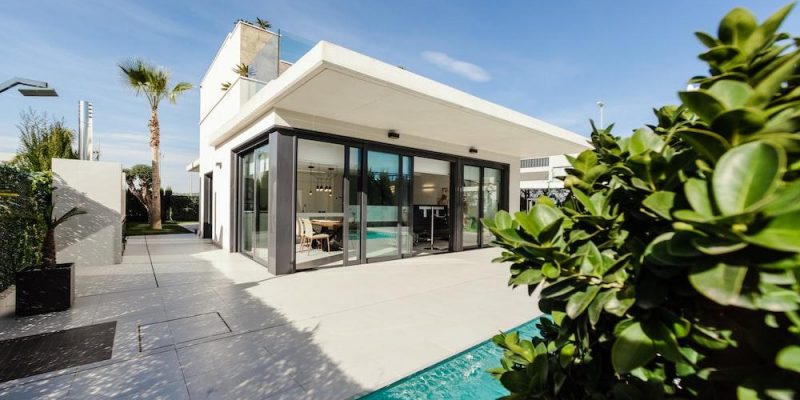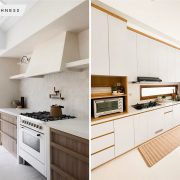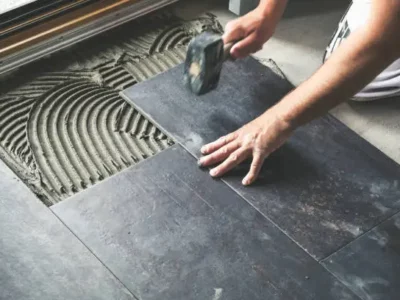In an era defined by dynamic progress and relentless innovation, the construction industry stands as a testament to humanity’s remarkable ability to blend creativity with technical precision. Modern construction has transcended its conventional bounds, ushering in an era where the marriage of artistry and scientific methodology creates architectural marvels that captivate our senses and shape the world around us. This article embarks on a comprehensive exploration of the multifaceted landscape of modern construction, delving deep into the intricate interplay between creative vision and rigorous engineering that underpins its essence.
The Evolution of Modern Construction
Tracing the evolution of construction techniques from antiquity to the present day, we find that the journey of human innovation has been a continuous endeavor to build structures that reflect our aspirations and technological capabilities. The transformation witnessed in modern construction is the culmination of centuries of architectural experimentation and adaptation. From the rudimentary dwellings of our ancestors to the awe-inspiring skyscrapers that punctuate modern cityscapes, each era has contributed to the tapestry of construction practices.
Key Components of Modern Construction
At the heart of modern construction lies a palette of materials and technologies that have rewritten the possibilities of architectural design. The combination of structural steel, reinforced concrete, glass, and sustainable alternatives such as bamboo and recycled materials has redefined the aesthetics and functionality of buildings. However, it is not just the materials that define modern construction; it’s the seamless integration of technology that has become its defining feature.
Efficiency and Sustainability
In an age dominated by concerns about climate change and environmental degradation, modern construction has taken up the mantle of sustainability with remarkable vigor. The mantra of “doing more with less” resonates throughout the construction process, from material selection to energy-efficient design. The advent of green building practices and the adoption of renewable energy sources have positioned modern construction as a proactive force in combating ecological challenges.
Design Flexibility and Creativity
Gone are the days when the limitations of traditional building techniques constrained architectural designs. Modern construction liberates architects and designers from these constraints, empowering them to conceive structures that defy gravity and imagination. The integration of parametric design tools and computational algorithms allows for the creation of complex forms that were once deemed unattainable. The skyline of contemporary cities, adorned with unconventional shapes and daring cantilevers, speaks volumes about the newfound design flexibility that characterizes modern construction.
Safety Measures and Regulations
A steadfast commitment to safety accompanies the juxtaposition of artistic expression and structural integrity in modern construction. Building codes, regulations, and engineering standards serve as the guardians of construction projects, ensuring that the creative vision is brought to life without compromising the safety of occupants and the community. The pursuit of aesthetic excellence goes hand in hand with a dedication to engineering precision, creating structures that are both awe-inspiring and secure.
Cost-Effectiveness and Time Efficiency
Contrary to the perception that innovation comes at a premium, modern construction has demonstrated its ability to optimize costs and streamline project timelines. Prefabrication and modular construction techniques reduce construction time by minimizing on-site work and waste. The result is not only faster project completion but also enhanced cost-effectiveness, making modern construction an attractive proposition for both investors and developers.
Challenges and Innovations
Every epoch in construction history has been punctuated by challenges that catalyze innovation. In the modern era, rapid urbanization, resource scarcity, and the need for sustainable solutions have spurred a wave of inventive approaches. Modular construction, a prime example of modern innovation, involves assembling pre-fabricated components like building blocks, reducing construction time and minimizing disruption to urban environments.
Human-Centric Approach
Modern construction is a celebration of human-centric design, focusing on creating spaces that enhance the well-being and comfort of occupants. The integration of technology, from smart home systems to responsive facades, creates environments that adapt to human needs and preferences. Architecture becomes a conduit through which individuals interact with their surroundings, fostering a symbiotic relationship between inhabitants and structures.
Collaboration and Interdisciplinary Efforts
The complexity of modern construction necessitates collaborative efforts that transcend traditional disciplinary boundaries. Architects, engineers, urban planners, environmental specialists, and sociologists collaborate seamlessly to create holistic solutions that address societal needs. This interdisciplinary synergy not only enriches the design process but also ensures that structures align with the broader context in which they exist.
Global Trends in Modern Construction
Around the world, modern construction manifests in diverse architectural expressions that reflect local culture, climate, and aspirations. Scandinavian minimalism, Arabian opulence, and Asian serenity are just a few of the regional flavors that grace the global architectural mosaic. These trends underscore the adaptability of modern construction principles to cater to a multitude of aesthetic and functional preferences.
Impacts on the Future
Peering into the horizon, we see that the impact of modern construction transcends the present moment. The growing emphasis on sustainability, energy efficiency, and holistic design principles will continue to shape the built environment of tomorrow. Buildings will not only be places of shelter but also ecosystems that contribute positively to the environment. The interplay of creativity and science will reshape cities into vibrant, sustainable hubs that foster the well-being of both humanity and the planet.
The realm of modern construction stands as a living testament to the boundless human imagination, paired with the precision of scientific endeavor. It transcends being a mere craft; it is an art form that fuses aesthetics and engineering into a harmonious symphony. As we traverse the landscape of modern construction, we realize that each structure is a chapter in a narrative that celebrates our potential to shape the world we inhabit.
In this dynamic landscape, one entity, Lusso Design and Build, emerges as a guiding light. Their commitment to pushing the boundaries of architectural innovation while prioritizing sustainability underscores the ethos of modern construction. Lusso’s projects are not just structures; they are testaments to the fusion of creativity and science, setting new standards for the art and science of building.




















